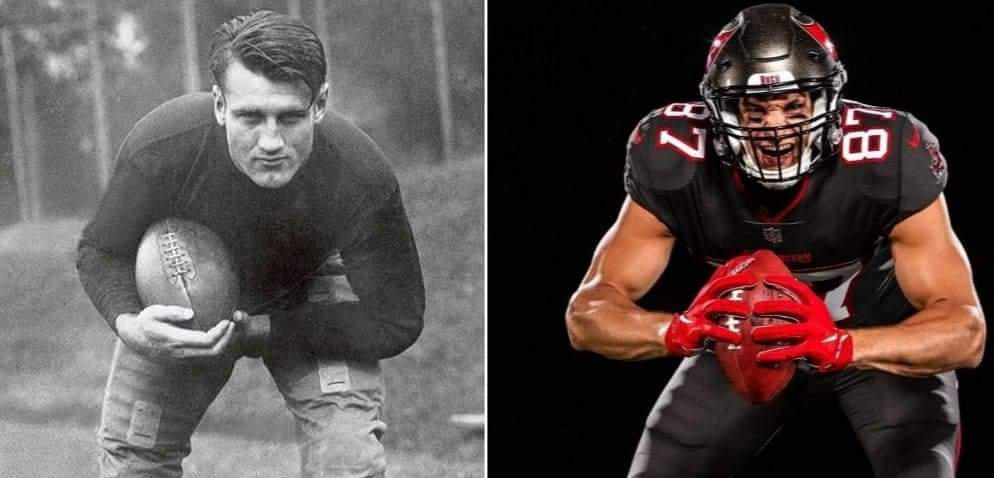In 1973, the TV series The Six Million Dollar Man was a smash hit. During the opening credits, a voice announced, “We have the technology. We can make him better than he was before. Better. Stronger. Faster.”
Six million dollars was an astronomical sounding amount of money in those days. Patrick Mahomes recently signed a 10-year contract for half a BILLION dollars. One thing stands true. We have the technology to make NFL players better, stronger, and faster, but is it only technology? Are players taller? Quicker?
In his TED Talk, David Epstein explains how Stephen Kiprotich of Uganda ran the 2012 Olympic marathon in 2:08:01. Had he run against the winner of the 1904 Olympic marathon, he would have won by nearly an hour and a half. (3:28:53). Over 100 years, the time to complete the race had been cut by over 35%.
In 1936 Jesse Owens held the world record in the 100 meters. At the 2013 World Championships, Owens would have still had 14 feet to go to finish the race when Usain Bolt crossed the finish line.
Are athletes actually that much faster? The genuine answer with sprinters is no. The surfaces that Owens and Bolt ran on were drastically different. The clothing and shoes that Bolt ran in were high tech by comparison. The rules had changed, adding starting blocks. Sports science tells us that if you break down all contributing factors, including biomechanical analysis of the speed of Owens’ joints, he would not have finished 14 feet behind. At the end of the race, he would have been within a single stride.
The average tennis player’s height in 1920 was 6’2″. In 2020 it is actually 6’1″ but serve speeds have become fast because of changes in racquet, string, and tennis ball technology.
How much have NFL players changed over the years? The answer may differ from what you imagine.
Quarterbacks have remained almost the same height over the last 60 years, around 6’2”. Although there are outliers like Cam Newton at 6’5”, the weight of the quarterback has gone from an average 200 lbs to 223 lbs over the same period. This can primarily be contributed to fitness, diet understanding and technology.
Fitness and technology have impacted most positions.
Among the positions with the least change are running backs. The average height is identical at 5’10″ but the weight is an amazing 35 lbs heavier. But that weight difference is minuscule compared to the position of greatest change, offensive line.
In 1920, the average offensive lineman was 6’0” tall and weighed 211 lbs. In today’s NFL that is a small wide receiver. Since 2014, the ideal size of an offensive lineman was 320-340 lbs. Since 2014, only 23 offensive linemen that started at least four games weighed less than 300 lbs. By comparison, 39 weighed over 320 lbs. Just 20 years ago there were almost zero linemen over 300 lbs. Speed has not suffered during this time, as linemen’s quickness has increased.
Changes in diet and technology have drastically impacted the game, but players today are not that much taller than they were 100 years ago. The quickness and top speed have increased and weight has increased, making the collisions far more violent than they were only 25 years ago. Playing surfaces have become high tech. Diet and training are a science, and the ability to find humans that can perform at these levels has increased. Player compensation draws only those that can perform at elite or even unheard-of levels.
Humans have not evolved drastically over a 50 years period, but athletes definitely have, or so it appears FROM THE CHEAP SEATS.












